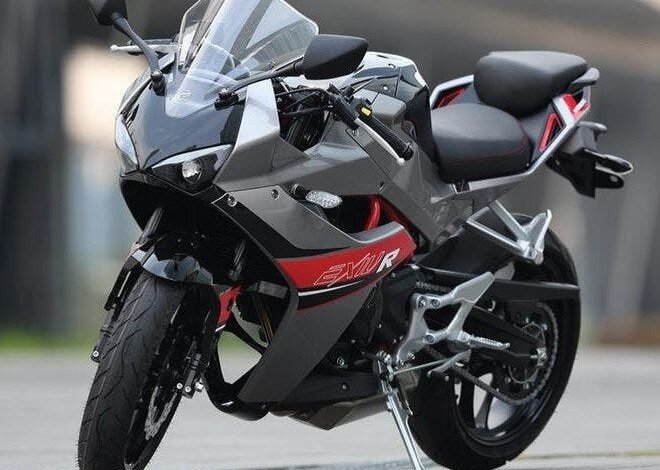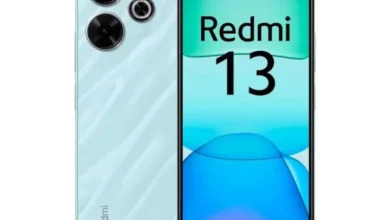Buying a New Baik? Here’s Everything You Should Know Before You Ride

Buying a new baik (bike) is one of those moments that feels a little like freedom, a little like adrenaline, and a lot like you’re about to make a solid investment in your daily lifestyle. Whether you’re picking up your first bike or upgrading from your current two-wheeler, the excitement is real—but so is the responsibility.
With so many makes, models, features, and styles available today, choosing a new baik isn’t just about what looks cool. It’s about finding something that fits your life, your budget, and your riding goals. In this guide, we’ll walk you through everything you need to know about buying a new baik—without the confusing jargon or pushy sales talk.
Why Buy a New Baik Instead of a Used One?
The first question people ask when thinking about a new baik is usually, “Why not just buy a used one?” It’s a fair point, but buying new has its own list of solid benefits that are hard to ignore.
To start, a new baik means reliability and zero history. When you’re the first owner, you know the bike hasn’t been dropped, poorly maintained, or abused. Everything from the tires to the engine is fresh and untouched, which usually translates into smoother performance and peace of mind. You won’t have to worry about surprise repairs or hidden issues popping up weeks after your purchase.
Then there’s the latest tech and safety features. Newer bikes often come with improved braking systems, better fuel injection technology, ABS (anti-lock braking system), and even smart features like Bluetooth connectivity and digital displays. These enhancements not only make your ride more enjoyable but can also boost your safety and long-term riding comfort.
Plus, let’s be honest—there’s something special about owning a brand-new bike. The smell, the shine, the way the engine sounds when you start it for the first time—it’s hard to beat that. It’s like a personal milestone, and for many riders, that emotional connection alone makes buying new totally worth it.
Choosing the Right Type of New Baik for Your Needs

Not all New Baik are created equal, and what works for one rider might be completely wrong for another. That’s why picking the right type of bike is the most crucial step in the entire buying process.
Start by asking yourself how you plan to use it. Is it for daily commuting in the city? A weekend cruiser for long highway rides? Or maybe you’re into off-road adventures and want something rugged for trails and rough terrain? Each of these purposes points to a different category of bikes—like scooters, naked bikes, cruisers, sportbikes, or adventure tourers.
Then there’s the engine capacity to consider. If you’re a beginner or looking for something fuel-efficient and easy to handle, a 100cc to 150cc bike might be perfect. On the other hand, if you’re craving power and performance, you might want to look at something in the 200cc to 500cc range—or even beyond that if you’re an experienced rider. But remember, bigger isn’t always better. Your skill level and riding environment matter more than just raw horsepower.
Also, don’t ignore comfort and ergonomics. A bike might look sleek and aggressive, but if your back hurts after 10 minutes of riding, it’s not going to be fun long term. Sit on the bike, check the seat height, handlebar position, and footpeg placement. A short test ride can tell you more than specs on a brochure ever could.
When’s the Best Time to Buy a New Baik?
Believe it or not, timing your purchase can make a big difference—not just on price, but also on the selection of models and deals you get.
Generally, the end of the financial year (around March in countries like India or June in others) is a great time to buy. Dealerships often try to clear old stock to meet targets or make room for new models. That means better discounts, freebies, and extra perks. Likewise, festive seasons—like Diwali, Eid, or New Year’s—are often packed with special offers, low-interest financing, and bonus accessories.
Another smart trick? Look for new model launches. When manufacturers release updated versions, dealerships might offer solid deals on the outgoing models, which are still brand new but priced more attractively. If you’re okay with last year’s version of a bike, this could be a win-win.
Finally, consider the off-season for riding. Fewer people shop for bikes in monsoon or winter months, depending on your location. With less foot traffic, dealers may be more open to negotiation. You might not ride much right away, but the deal might be worth the wait.
Budgeting for Your New Baik the Smart Way
Let’s get real for a second—a new bike isn’t just about the sticker price. There are several other costs that sneak in, and if you’re not careful, you’ll overspend before you even hit the road.
Start with the on-road price, not just the ex-showroom rate. This includes registration, insurance, road tax, and handling charges. Depending on your location and the bike, this can add 10–20% to the original price. Always ask for the final figure when budgeting.
Next, think about insurance options. A basic third-party insurance is mandatory, but a comprehensive policy is highly recommended. It covers theft, damage, and even personal accident claims. Many dealerships offer bundled insurance, but don’t hesitate to compare it with other providers to get the best deal.
Don’t forget about accessories and gear. A good helmet, riding gloves, jacket, and even a rain cover or security lock should be factored in. They aren’t just optional—they’re essential for safety and bike protection. And of course, set aside a bit for regular maintenance like oil changes, chain lube, and tire checks. These small things keep your bike running like new for years.
What to Check Before You Ride Off
Buying a new baik is exciting, but before you roll out of the dealership, do a detailed delivery inspection to make sure everything’s in order.
Start with a full visual inspection. Look closely at the paintwork, tires, rims, and body panels. Are there any scratches, dents, or marks? If yes, don’t take delivery until they’re fixed or noted in writing. Also, make sure you’re getting everything that was promised—accessories, helmet, toolkit, and user manuals.
Check all electricals and switches. Test the indicators, headlight (both high and low beam), brake lights, horn, and console display. Make sure the battery is charged and the fuel tank has enough fuel to get you home safely.
Finally, get a clear demo from the dealership staff on how to operate any new features—like digital meters, ride modes, or safety systems. Ask about your first service schedule, warranty coverage, and who to contact in case of any issues. This is your time to clear every doubt—don’t rush it.
Final Thoughts: Is Buying a New Baik Worth It?
So, is buying a new baik really worth it? In most cases, yes—if you do it right.
With a new bike, you’re getting reliability, warranty support, the latest features, and the joy of ownership. But it’s important to make a smart, informed decision rather than just going with what’s trendy. Choose a bike that fits your needs, your lifestyle, and your budget—not just what looks cool in ads or movies.
At the end of the day, your bike should make you feel good every time you ride it. Whether it’s for beating traffic, exploring highways, or simply enjoying the thrill of two wheels—buying a new bike is more than a purchase. It’s a lifestyle upgrade.



